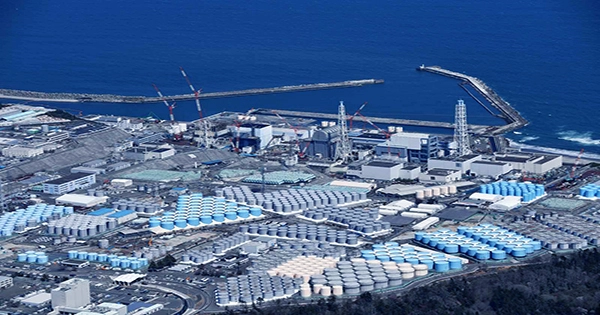Since Monday, the International Atomic Energy Agency (IAEA), an UN-accredited international nuclear task force, has been in Fukushima to assess the country’s plans to dump polluted water into the Pacific Ocean. The taskforce “made substantial progress in its work this week to acquire a better understanding of Japan’s operational and regulatory arrangements for the disposal of the treated water,” IAEA deputy director general Lydie Evrard told reporters on Friday.
A magnitude 9.0 earthquake generated a deadly tsunami that slammed onto Japan’s East coast approximately eleven years ago. The 15-meter (49.2-foot) high tsunami slammed into the Fukushima Daiichi nuclear power plant’s reactors, knocking off the power to three reactor cores. Without electricity to the coolers, all three cores melted down in a matter of days, spewing radiation into the atmosphere. The consequences are still being felt in Japan today. This isn’t hyperbole: once local radiation levels were finally declared low enough for people to return, the first few residents of adjacent Futaba returned home for the first time in almost a decade this week.
However, one issue that requires immediate attention is the fate of the more than a million tonnes (1.1 million tons) of wastewater stored in the site’s tanks. Originally, these tanks housed water for cooling the damaged reactors, but due to rainfall and groundwater seepage, the levels have steadily increased over time. In a matter of months, the tanks are projected to reach their capacity. That’s why, last year, the Japanese government announced intentions to dump it into the sea, a decision that sparked immediate outrage due to environmental and tourist concerns.
“We need to remind Japan and other nuclear states of our Nuclear Free and Independent Pacific (NFIP) movement slogan: if it’s safe, dump it in Tokyo, test it in Paris, store it in Washington, but keep our Pacific nuclear-free,” Motarilavoa Hilda Lini, a Vanuatu stateswoman and veteran NFIP activist, said shortly after Japan’s announcement. “As ocean people, we must do action to defend it.” Despite these concerns, the International Atomic Energy Agency (IAEA) has approved the plan, stating that it is identical to other facilities’ wastewater disposal techniques.
The plant’s operator, Tokyo Electric Power Company, or Tepco, maintains the water has been treated to eliminate practically all radioactive materials, leaving just tritium – a form of hydrogen with two neutrons – behind. While this is harmful, experts claim that when diluted across the entire ocean, the amount in the environment will be minimal. “The optics are bad, but the Japanese government is actually doing the right thing by discharging cleaned effluent from the Fukushima plant into the ocean,” Nigel Marks, Associate Professor of Physics and Astronomy at Curtin University, stated last year.
“The level of radioactivity can be decreased to safe levels comparable to those associated with radiation from granite boulders, bore water, medical imaging, airplane travel, and some types of food by diluting the tritium/water mixture with ordinary sea water.” Despite the IAEA’s promise to “listen very carefully to local people’s concerns,” critics oppose the plan. Shaun Burnie, senior nuclear specialist for Greenpeace East Asia, said ahead of Friday’s press release that the IAEA “should be investigating the root cause of the contaminated water crisis and exploring the option of long-term storage and the best available processing technology as an alternative to the deliberate contamination of the Pacific.”
“The International Atomic Energy Agency […] has attempted to rationalize radioactive marine contamination as having no impact and being safe,” Burnie stated. “However, it is not the IAEA’s mission to protect the environment, human health, or human rights from radiation hazards.”
For the time being, the IAEA is collecting water samples and gathering technical information about the water disposal plan, which is an important step given that dangerous isotopes such as carbon-14, cobalt-60, and strontium-90 may still be present in the treated wastewater, according to a study published last year. The findings will be released as the first of numerous studies in a multi-year study in late April. “It’s critical to the project’s success that transparency and objectivity are maintained,” Junichi Matsumoto, a Tepco executive in charge of the treated water management, said last week. “Based on the review, we intend to strengthen the objectivity and transparency of the process even more.”















